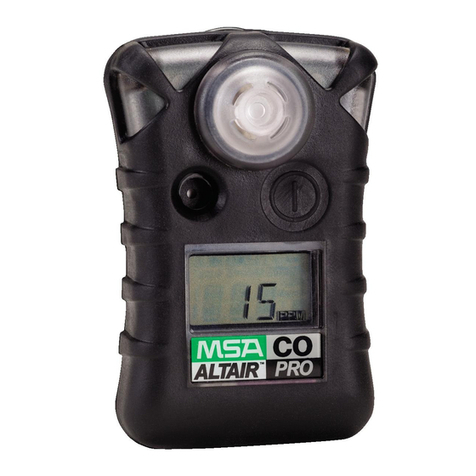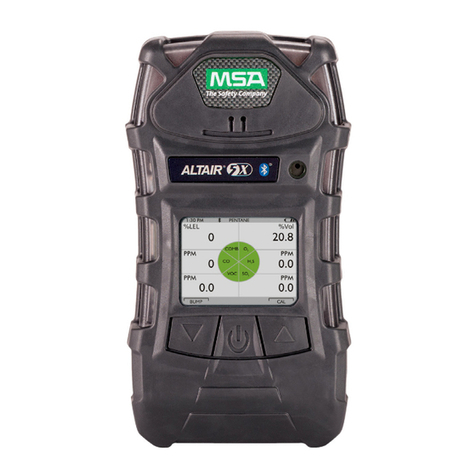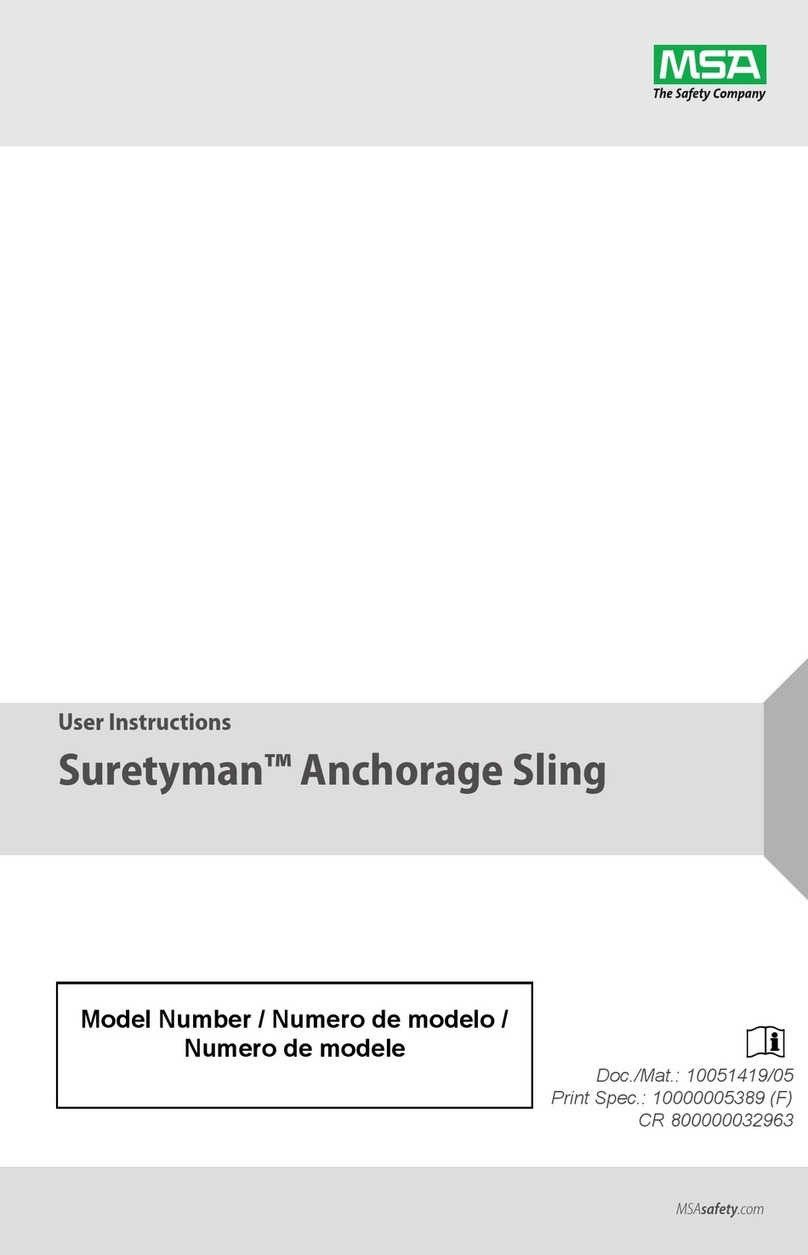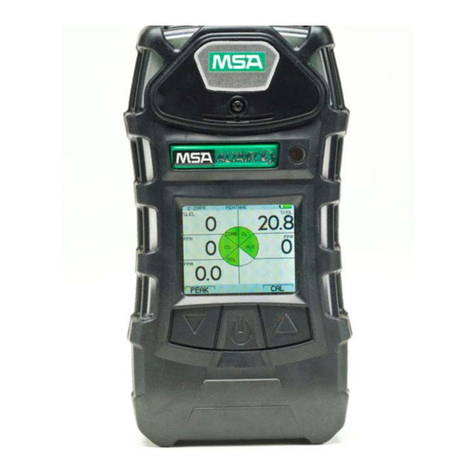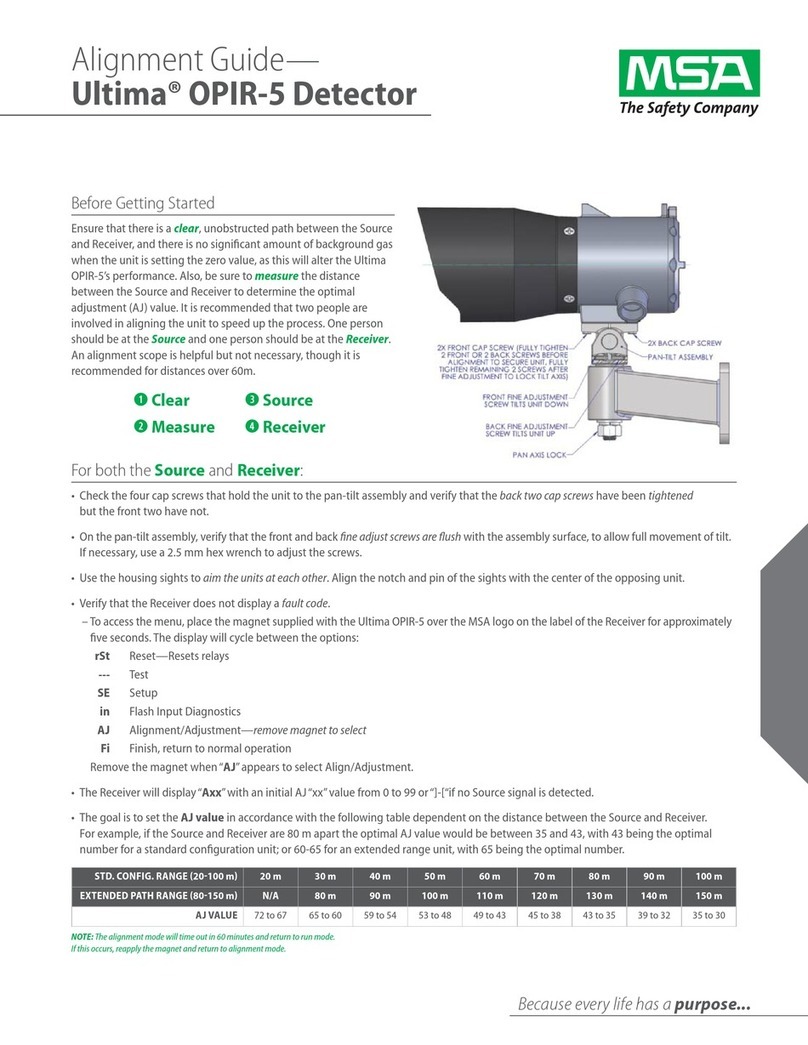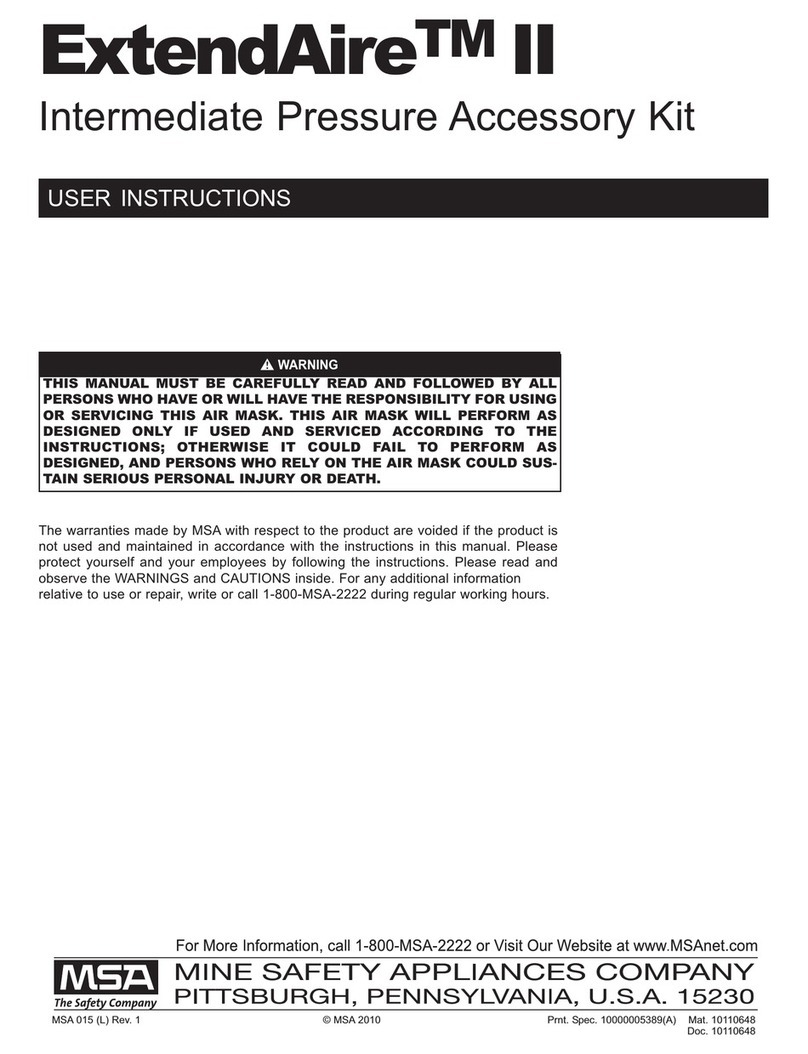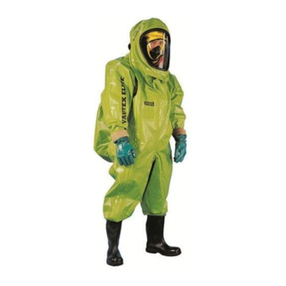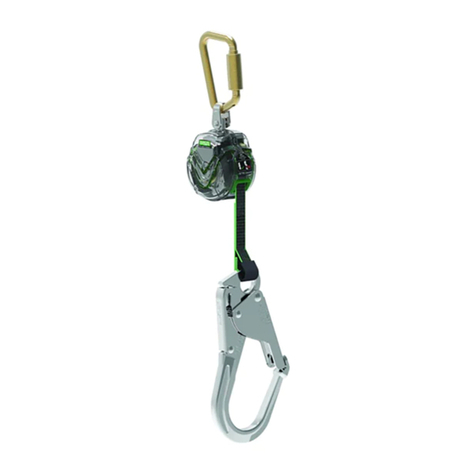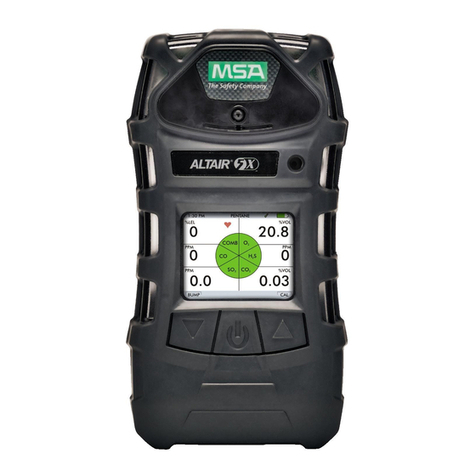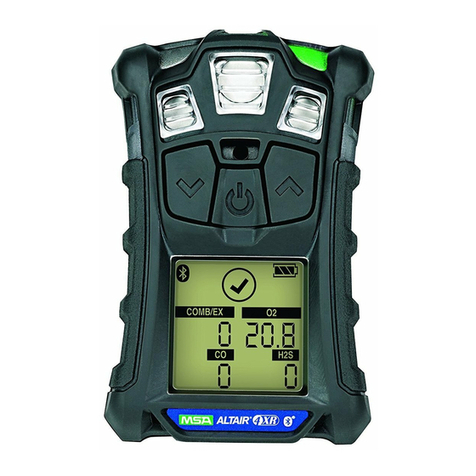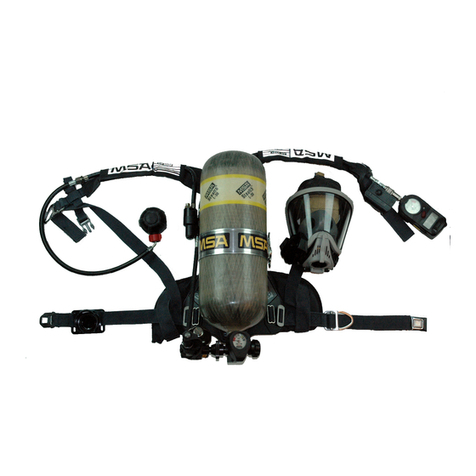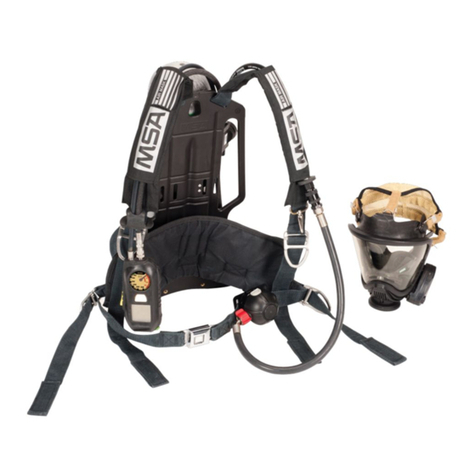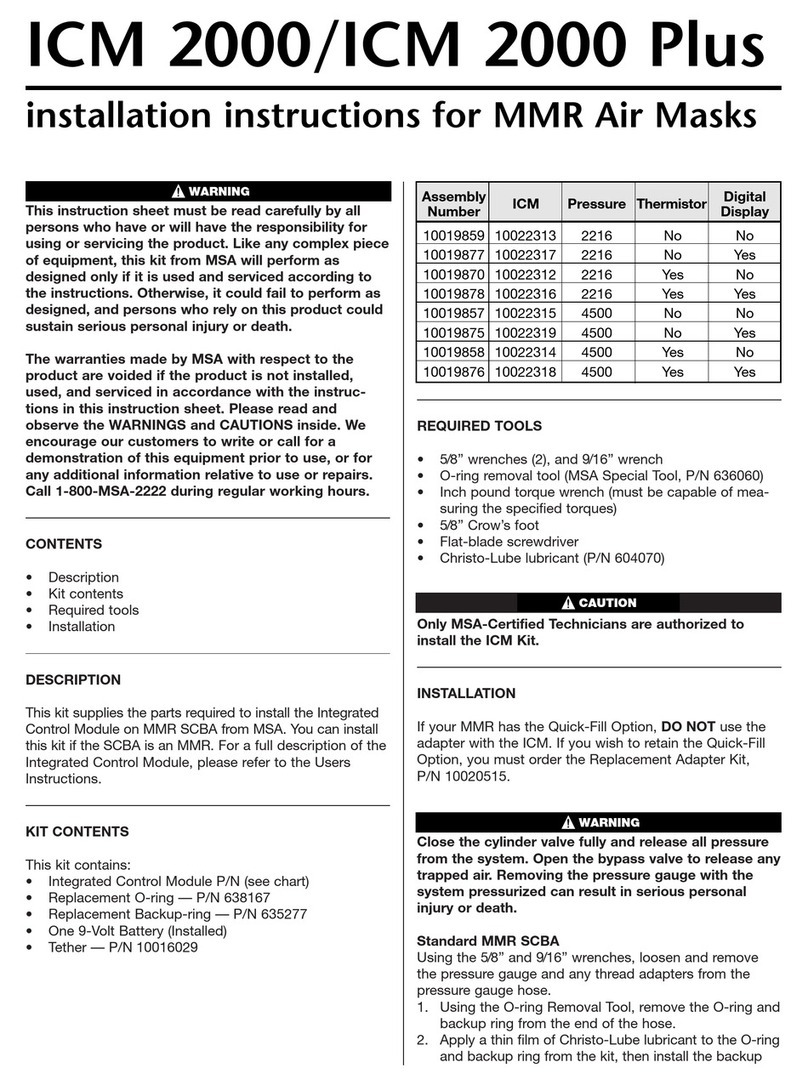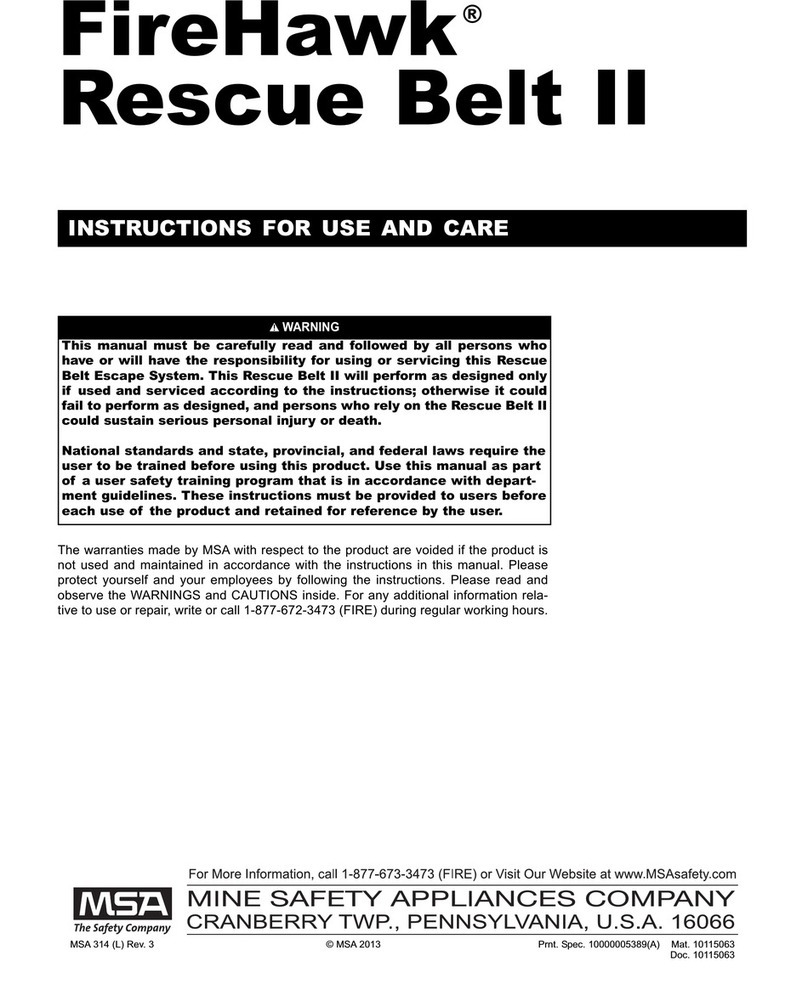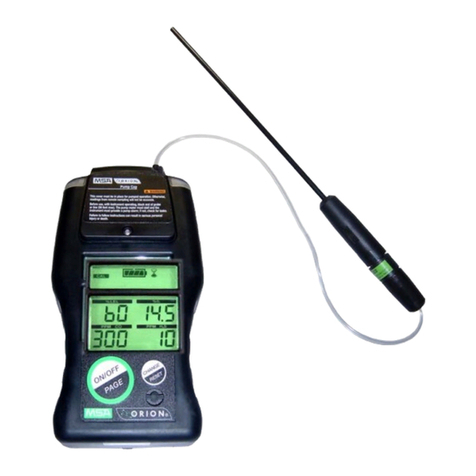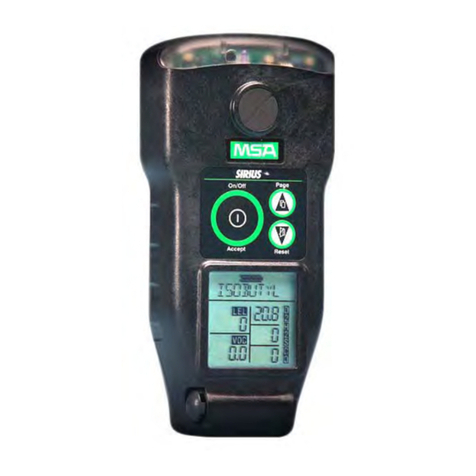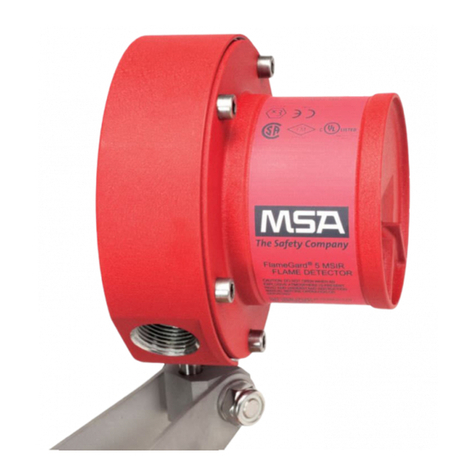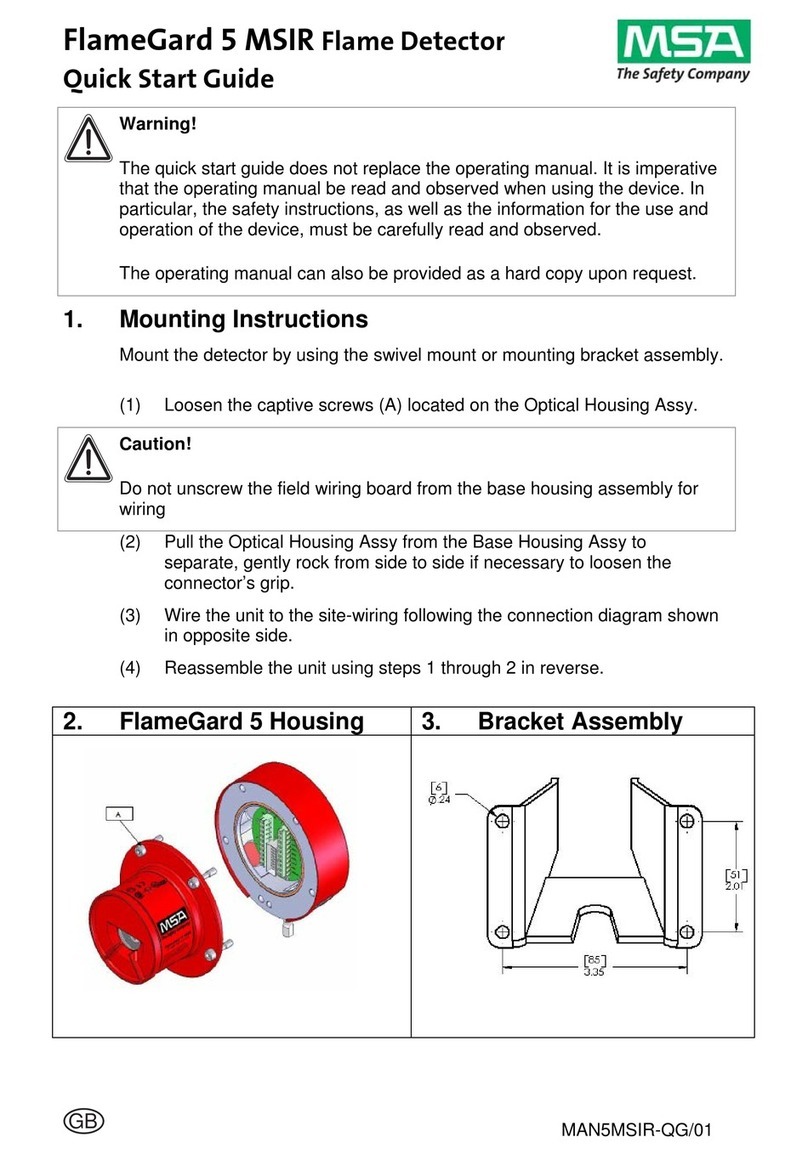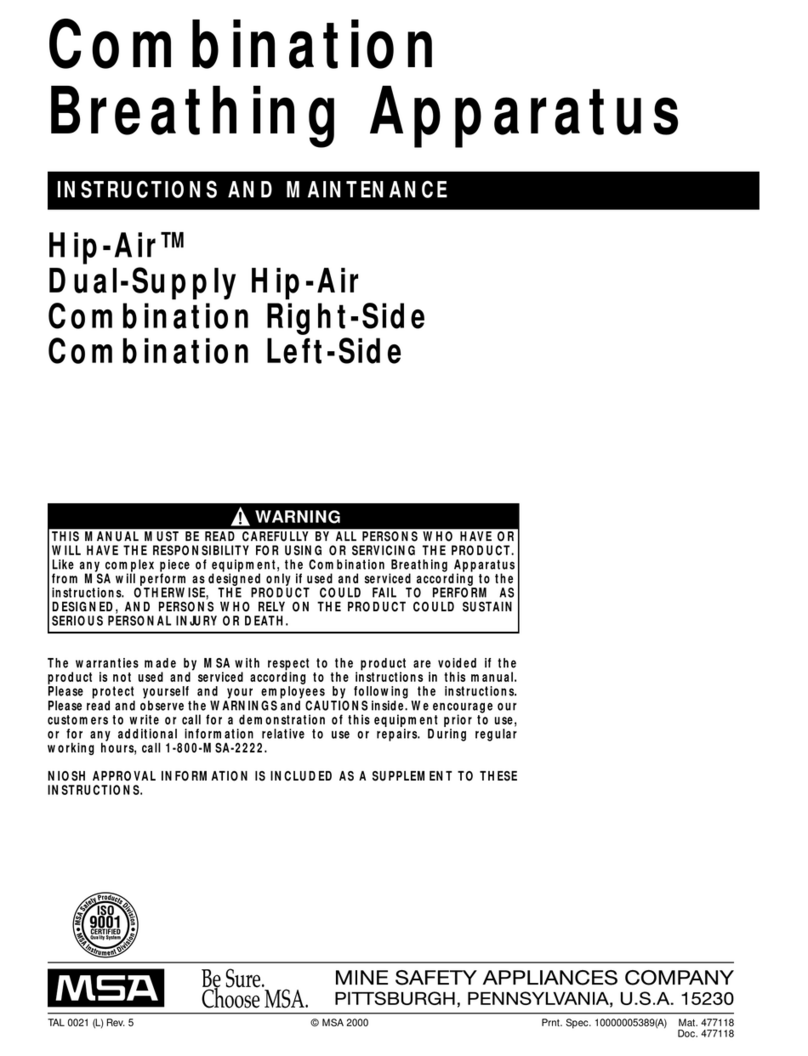Locate the detector:
• indoors in a room area where air circulates freely
• indoors in an area near fittings where refrigerant leaks may occur
• on a flat, interior surface
• approximately 12-18 inches (30-45 cm) from floor
Do not locate the detector:
• near heat sources, such as appliances, direct sunlight or concealed pipes or chimneys
• on walls or structures subject to excessive vibration
• in areas where air does not circulate freely, such as behind doors or in corners.
3.2 Mounting the detector
The detector consists of two basic parts, the base and the cover (Figure 1). The cover
incorporates the electronics with the sensing elements.
1. Fasten the base to a junction box or other support.
• The base has a number of openings to allow for mounting to various junction boxes.
CONFIGURATION LABEL TOP
APPROVAL LABEL
BASE
SERIAL NUMBER LABEL
Figure 1: Base and Cover
2. Feed the power and signal wires through the rectangular opening in the base.
1 SAFETY REGULATIONS
1.1 Correct Use
MSA’s CHILLGARD®VRF Refrigerant Detector – hereafter referred to as detector – is
designed to detect the presence of the most common halogenated refrigerants, and
specifically calibrated to detect R410a.
WARNING
This manual must be carefully read by all individuals who have or will have the responsibility for
installing, using, or servicing the product. This product is supporting life and health. Incorrect use,
maintenance, or servicing may affect the function of the device and persons who rely on this product for
their safety could sustain loss of life or serious personal injury.
Furthermore, the national regulations applicable to the user’s country must be taken into
account for safe use of this product. Alternative use, or use outside of this specification will
be considered as non-compliance. This also applies especially to unauthorized alterations to
the product and to commissioning work that has not been carried out by MSA or authorized
persons.
1.2 Liability Information
MSA accepts no liability in cases where the product has been used inappropriately or not
as intended. The selection and use of this product must be under the direction of a qualified
safety professional who has carefully evaluated the specific hazards of the site where it will
be used and who is completely familiar with the product and its limitations. The selection and
use of this product and its incorporation into the safety scheme of the site is the exclusive
responsibility of the employer.
Warranties, also known as guarantees, made by MSA with respect to the product are voided
if the product is not used, serviced, or maintained in accordance with the instructions in this
manual.
1.3 Safety and Precautionary Measures
WARNING
Carefully review the following safety limitations and precautions before placing this device in service.
Incorrect use can cause loss of life or serious personal injury.
• Install, operate, and maintain this instrument in strict accordance with its labels, cautions, warnings,
instructions, and within the limitations stated.
• Do not install this detector in outdoor areas or locations where explosive concentrations of
combustible gases or vapors might occur in the atmosphere. Do not paint this detector. Painting will
interfere with the sampling process of the detector. If painting is being done in an area where the
detector is located, exercise care to ensure that paint is not put or splashed on the detector.
WARNING
The unit must always be powered by either a suitable UL/CSA/IEC 60950 Certified power supply which is
isolated from line voltage by double insulation, or an appropriately rated UL Listed/CSA Certified Class 2
transformer. Failure to follow the above can result in serious personal injury or loss of life.
3. Connect the wires to the terminal connector located in the base, as indicated in Figure 2. The
terminal block on the base includes a label to identify the connections. Figure 3 shows the
wiring connection definitions. All units come with an analog and a digital output. The analog
output will be either current (mA) or voltage (V) and the digital output will be either BACnet
or Modbus. The choice is made based on the part number ordered.
Figure 2: Connecting Wires to Terminal Connector
Terminal Label Description
24V+ 24 V DC+ or AC Line
24V- 24 V DC- or AC Neutral
Circuit common/analog signal reference
GAS OUT
(mA or V)
For (mA) – Gas reading as current (4 - 20 mA = 0 - 1000 ppm)
For (V) – Gas reading as voltage (2 - 10 V = 0 - 1000 ppm)
• Protect this detector from vibration and heat; otherwise improper operation may result.
• Verify product operability. Do not use the detector if the function test is unsuccessful or the detector
is damaged.
• Ensure that all servicing is performed by MSA authorized technicians, using genuine MSA
replacement parts
CAUTION
Install this detector in as clean and dry area as possible and install splash shields to keep water and
other contaminants away from the detector; otherwise, damage can occur.
1.4 Warranty
1. Seller warrants that this product will be free from mechanical defect or faulty workmanship
for a period of 18 months from date of shipment, provided it is maintained and used in
accordance with Seller’s instructions and/or recommendations. This warranty does not apply
to expendable or consumable parts whose normal life expectancy is less than one (1) year
such as, but not limited to, non-rechargeable batteries, filament units, filter, lamps, fuses etc.
The Seller shall be released from all obligations under this warranty in the event repairs or
modifications are made by persons other than its own or authorized service personnel or if the
warranty claim results from physical abuse or misuse of the product. No agent, employee or
representative of the Seller has any authority to bind the Seller to any affirmation, representation
or warranty concerning the goods sold under this contract. Seller makes no warranty
concerning components or accessories not manufactured by the Seller, but, to the extent
possible, will pass on to the Purchaser all warranties of manufacturers of such components.
THIS WARRANTY IS IN LIEU OF ALL OTHER WARRANTIES, EXPRESSED, IMPLIED
OR STATUTORY, AND IS STRICTLY LIMITED TO THE TERMS HEREOF. SELLER
SPECIFICALLY DISCLAIMS ANY WARRANTY OF MERCHANT ABILITY OR OF FITNESS
FOR A PARTICULAR PURPOSE.
2. Exclusive Remedy - It is expressly agreed that Purchaser‘s sole and exclusive remedy for
breach of the above warranty, for any tortious conduct of Seller, or for any other cause of
action, shall be the repair and/or replacement at Seller‘s option, of any equipment or parts
thereof, which after examination by Seller is proven to be defective. Replacement equipment
and/or parts will be provided at no cost to Purchaser, F.O.B. Seller‘s Plant. Failure of Seller to
successfully repair any non-conforming product shall not cause the remedy established hereby
to fail of its essential purpose.
3. Exclusion of Consequential Damage - Purchaser specifically understands and agrees that
under no circumstances will seller be liable to purchaser for economic, special, incidental or
consequential damages or losses of any kind whatsoever, including but not limited to, loss of
anticipated profits and any other loss caused by reason of non-operation of the goods. This
exclusion is applicable to claims for breach of warranty, tortious conduct or any other cause
of action against seller.
4. This detector has no user-replaceable parts. Modification of the unit will void the warranty.
Terminal Label Description
DATA a
(BACnet or Modbus)
For BACnet – RS485 BACnet MSTP (a) connection
For Modbus – RS485 Modbus RTU (a) connection
DATA b
(BACnet or Modus)
For BACnet – RS485 BACnet MSTP (b) connection
For Modbus – RS485 Modbus RTU (b) connection
NO Relay – normally open (de-energized)
C Relay – common
NC Relay – normally closed (de-energized)
Figure 3: Wiring Connections
4. Align the top side tabs of the cover with the base and snap the cover onto the base, and
fasten the screw.
Note: Verify cover is securely attached to base by pulling on the top and bottom of
the cover as shown in Figure 4.
5. To remove the cover, remove the screw and pull the enclosure away from the base as show
in Figure 4.
Screw on
Grasp here and
pull to release
Pull on top
to verify
the attachment
Grasp here and
pull to release
Figure 4: Attaching or Removing the Cover
2 SPECIFICATIONS
This detector detects R410a with a number of output options. This includes analog output
(current or voltage) and RS-485 digital output (Modbus or BACnet). Check label provided on
the printed circuit board (Figure 1- shows the label).
Power Requirements 24 VDC ±20 %, 24 VAC ±20 %, 50/60 Hz, Class 2
Wiring 14 AWG max (up to 2.5 mm2), Class 2 copper wiring
Power Consumption Less than 5 watts
Output Options 4 to 20 mA sourcing, ≤500 Ohm load, 2-10 V, 10 K Ohm load,
RS-485: Modbus RTU, BACnet MS/TP
Operating Temp. 0 °C to 60 °C
Humidity 0 to 99 % non-condensing
Size 4.7” x 4.1” x 1.7” (11.9 cm x 10.4 cm x 4.3 cm)
Weight 0.51 lbs. (230 g)
Pressure Operating 10.2 to 15.7 PSIA (70 to 108 kPa)
Altitude 0-2000 m
Warm-up time 30 Minutes
Pollution Degree 2
Installation Category II
Range 0 to 1000 ppm
Minimum Detection 25 ppm
Response Time t50 less than 240 seconds
Repeatability ±10 ppm at 50 ppm
Linearity ±10 ppm from 25-50 ppm,
±20 % of reading from 50 to 1000 ppm
Relay Rated load: 1 A at 30 VDC, Max. operating current: 1 A,
Max. switching capacity: 30 W
3 INSTALLATION GUIDELINES
3.1 Locating the detector
Proper detector location is necessary to ensure accurate measurement of representative air
samples.
3.3 Dimensions in mm [inch]
26.4
[1.040]
54.4
[2.140]
60.3
[2.373]
32
[1.260]
79.9
[3.147]
58.2
[2.290]
59.9
[2.360]
